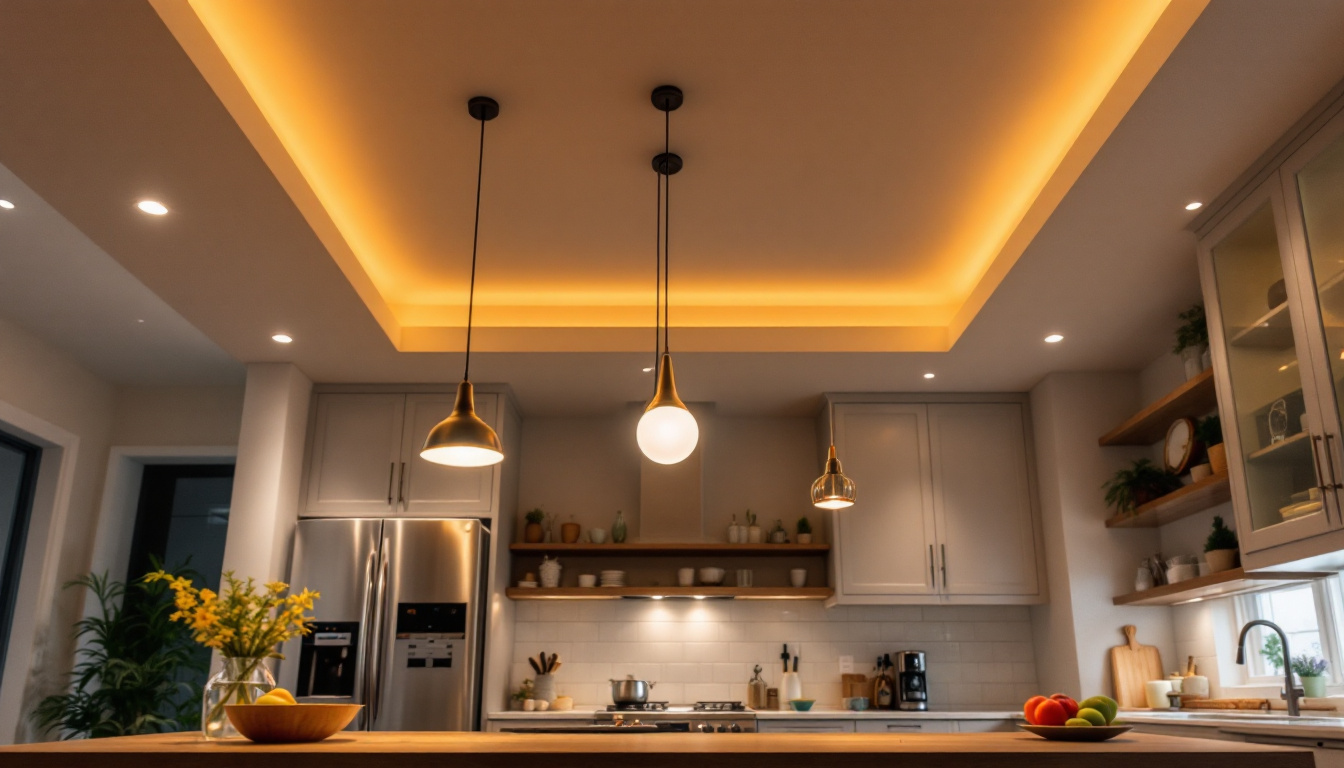
In the realm of lighting installation, efficiency and reliability are paramount. As technology continues to advance, lighting contractors are constantly seeking innovative solutions to streamline their processes and enhance project outcomes. One such solution that has gained traction is the concept of light backup. This article delves into how light backup can significantly improve lighting installation projects, ensuring that contractors can deliver exceptional results to their clients.
Light backup refers to the integration of supplementary lighting systems designed to provide consistent illumination in the event of a primary system failure. This redundancy is crucial in various settings, from residential to commercial and industrial environments. By ensuring that there is always a reliable source of light, contractors can enhance safety, functionality, and aesthetic appeal.
In any lighting installation project, the risk of failure is a reality that contractors must address. Whether due to power outages, equipment malfunctions, or unforeseen circumstances, having a backup lighting system can mitigate these risks. Redundancy not only ensures that spaces remain illuminated but also prevents potential safety hazards that may arise in poorly lit areas.
Moreover, redundancy can enhance the overall user experience. For example, in commercial settings such as retail stores or restaurants, maintaining consistent lighting is essential for creating an inviting atmosphere. A sudden loss of light can disrupt operations and negatively impact customer satisfaction. By implementing light backup systems, contractors can safeguard against these disruptions.
In addition to improving safety and user experience, effective light backup systems can also play a significant role in compliance with local regulations and safety codes. Many jurisdictions require specific lighting standards in commercial buildings, especially in areas like stairwells, hallways, and exits. By incorporating light backup solutions, contractors not only adhere to these regulations but also demonstrate a commitment to the well-being of occupants.
There are various types of light backup solutions that contractors can consider, each with its unique advantages. These include battery-powered emergency lights, generator-powered systems, and even solar-powered backup options. Understanding the specific needs of a project will help contractors choose the most appropriate solution.
Battery-powered emergency lights are often the most straightforward option. They are easy to install and can provide immediate illumination during a power failure. Generator-powered systems, on the other hand, are more robust and can support larger lighting setups, making them ideal for commercial or industrial applications. Solar-powered backup systems offer an eco-friendly alternative, leveraging renewable energy to maintain lighting even in the event of a grid failure.
Additionally, smart lighting technologies are emerging as a viable option for light backup systems. These systems can be integrated with building management systems to automatically detect power failures and activate backup lighting without manual intervention. This not only enhances convenience but also ensures that emergency lighting is deployed instantly, further minimizing risks associated with sudden darkness. Furthermore, these smart systems can provide real-time monitoring and alerts, allowing facility managers to keep track of the status of their lighting systems and address any issues proactively.
Safety is a top priority in any lighting installation project. Light backup systems play a critical role in ensuring that spaces remain safe for occupants, especially in emergency situations. Building codes and regulations often require specific lighting standards to be met, particularly in commercial and public spaces. By incorporating light backup solutions, contractors can ensure compliance with these regulations while enhancing overall safety.
Many jurisdictions have stringent regulations regarding emergency lighting, particularly in commercial buildings. These regulations often stipulate the minimum level of illumination required in case of an emergency, as well as the duration for which backup lighting must remain operational. Contractors who integrate light backup systems into their projects can ensure that they meet these standards, avoiding potential legal issues and ensuring the safety of building occupants.
In addition to meeting regulatory requirements, having a reliable backup lighting system can also enhance a contractor’s reputation. Clients are more likely to trust contractors who prioritize safety and compliance, leading to increased referrals and repeat business. Furthermore, contractors can leverage their commitment to safety in marketing efforts, showcasing their expertise in navigating complex regulatory landscapes and emphasizing their dedication to protecting both clients and the public.
In the event of an emergency, such as a fire or natural disaster, having a light backup system can significantly improve evacuation procedures. Well-lit exit routes and emergency areas can facilitate a swift and safe evacuation, reducing the risk of injury. Contractors who prioritize light backup solutions contribute to a safer environment, which is a compelling selling point for potential clients.
Furthermore, training staff on the importance of backup lighting and how to utilize it effectively can enhance overall emergency preparedness. This proactive approach not only protects occupants but also positions contractors as leaders in safety within the industry. Additionally, regular maintenance and testing of backup lighting systems are essential to ensure their reliability when needed most. By establishing a routine check-up schedule, contractors can guarantee that all components are functioning optimally, thus reinforcing their commitment to safety and compliance. This diligence not only safeguards lives but also fosters a culture of safety within the organization, encouraging all employees to prioritize emergency preparedness in their daily operations.
Beyond safety and compliance, light backup systems can also streamline the installation process itself. By incorporating these systems into initial designs, contractors can simplify future maintenance and upgrades. This proactive approach leads to time and cost savings, benefiting both contractors and clients.
When planning a lighting installation project, considering light backup solutions from the outset can lead to a more cohesive design. Contractors can integrate backup systems into the overall lighting layout, ensuring that they complement the primary lighting rather than detract from it. This holistic approach can enhance the aesthetic appeal of the space while ensuring functionality.
Moreover, designing with light backup in mind can simplify the installation process. By identifying the optimal locations for backup lights during the planning phase, contractors can reduce the need for rework and adjustments later on. This efficiency not only saves time but also minimizes disruptions to clients during the installation process. Furthermore, thoughtful placement of backup systems can enhance the overall safety of the environment, providing illumination in critical areas during power outages or emergencies, which is particularly vital in public spaces such as schools, hospitals, and commercial buildings.
Light backup systems also facilitate easier maintenance and upgrades. By having a clear understanding of where backup systems are located and how they integrate with primary lighting, contractors can quickly address any issues that may arise. This proactive maintenance approach can extend the lifespan of both primary and backup systems, ultimately providing better value to clients.
Additionally, as technology evolves, upgrading lighting systems can become more straightforward. Contractors can implement new technologies in both primary and backup systems without significant disruptions, ensuring that clients benefit from the latest advancements in lighting technology. The integration of smart lighting solutions, for instance, allows for real-time monitoring and control, which can enhance energy efficiency and reduce operational costs. Moreover, as clients become more environmentally conscious, the ability to upgrade to energy-efficient LED backup systems can significantly contribute to sustainability goals while also appealing to a growing market of eco-aware consumers.
While the initial investment in light backup systems may seem significant, the long-term benefits often outweigh the costs. By enhancing safety, ensuring compliance, and streamlining installation processes, contractors can provide added value to their clients, justifying the investment in backup solutions.
Investing in light backup systems can lead to long-term savings in various ways. For instance, by reducing the risk of accidents and injuries due to inadequate lighting, contractors can help clients avoid potential legal costs and liabilities. Furthermore, well-lit spaces can enhance energy efficiency, leading to lower utility bills over time.
Additionally, clients may find that the increased reliability of their lighting systems reduces maintenance costs. With fewer outages and malfunctions, the need for frequent repairs diminishes, allowing clients to allocate resources to other areas of their operations.
Ultimately, the goal of any lighting installation project is to satisfy the client. By incorporating light backup solutions, contractors can enhance the overall experience for their clients. Providing a reliable and safe lighting environment fosters trust and satisfaction, leading to positive reviews and referrals.
Moreover, clients are more likely to appreciate the foresight and professionalism demonstrated by contractors who prioritize light backup solutions. This added value can differentiate contractors in a competitive market, positioning them as leaders in the industry.
In the fast-paced world of lighting installation, the integration of light backup systems is a strategic move that can significantly enhance project outcomes. By prioritizing safety, compliance, and efficiency, contractors can deliver exceptional results that meet the needs of their clients. As the industry continues to evolve, embracing innovative solutions like light backup will be essential for staying ahead of the curve and ensuring long-term success.
Ultimately, the benefits of light backup extend beyond mere functionality. They encompass safety, compliance, cost-effectiveness, and client satisfaction. By understanding and implementing these systems, lighting contractors can elevate their projects and foster lasting relationships with their clients.
Ready to enhance your lighting installation projects with reliable and cost-effective light backup solutions? Look no further than LumenWholesale. Our spec-grade lighting products are designed to meet the highest industry standards, ensuring that safety, compliance, and efficiency are at the forefront of your installations. With unbeatable wholesale prices and the convenience of free shipping on bulk orders, we provide the value and quality you need to light up your projects successfully. Elevate your lighting game and discover wholesale lighting at the best value today!

Discover the crucial role waterproof automotive electrical connectors play for lighting contractors.

Discover the essential insights lighting contractors need to meet client expectations for kitchen ceiling lighting.

Discover the essential guide for lighting contractors on outdoor LED solar lanterns.

Discover how contemporary industrial lighting solutions can enhance efficiency and boost profits for lighting contractors.